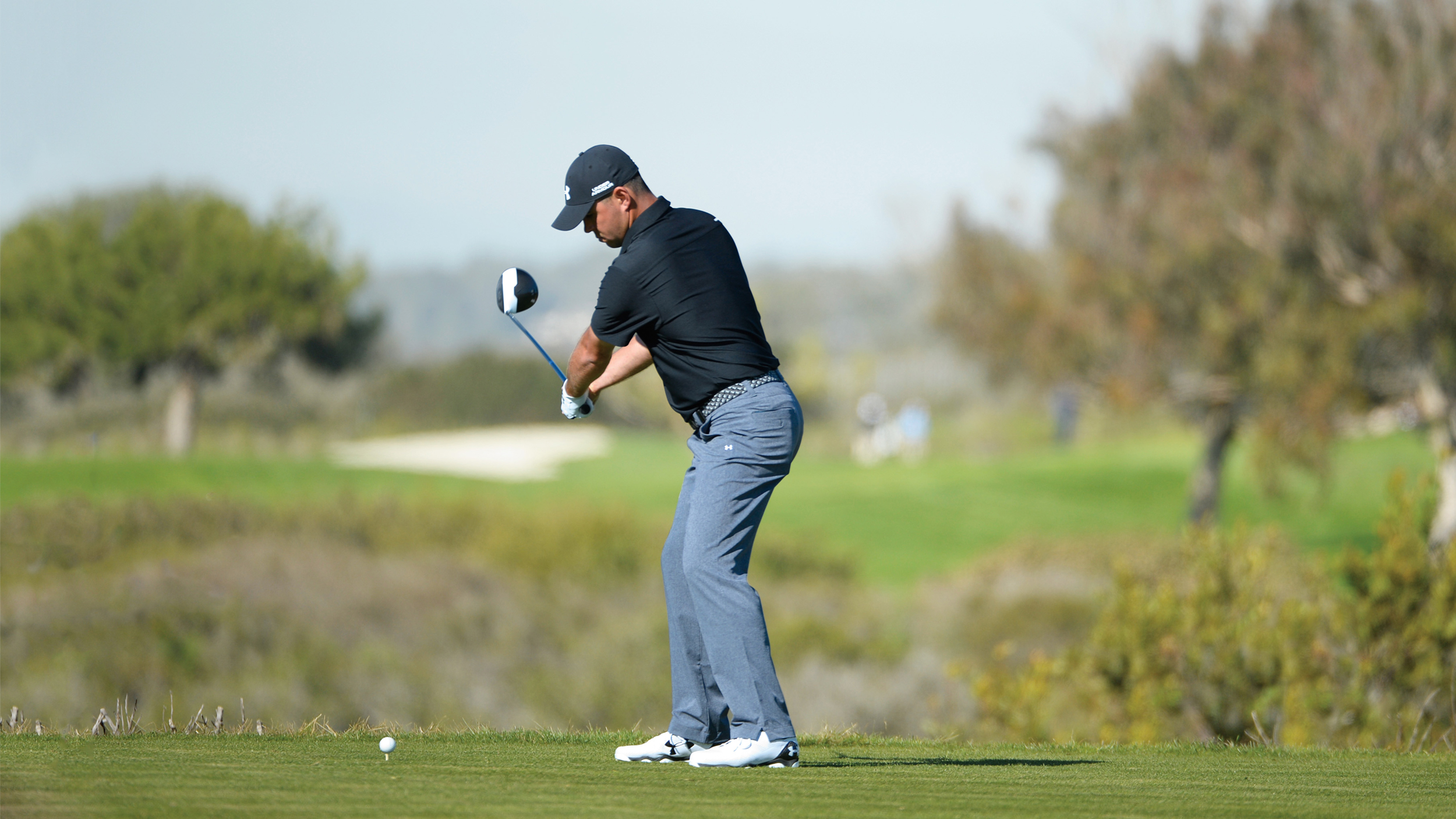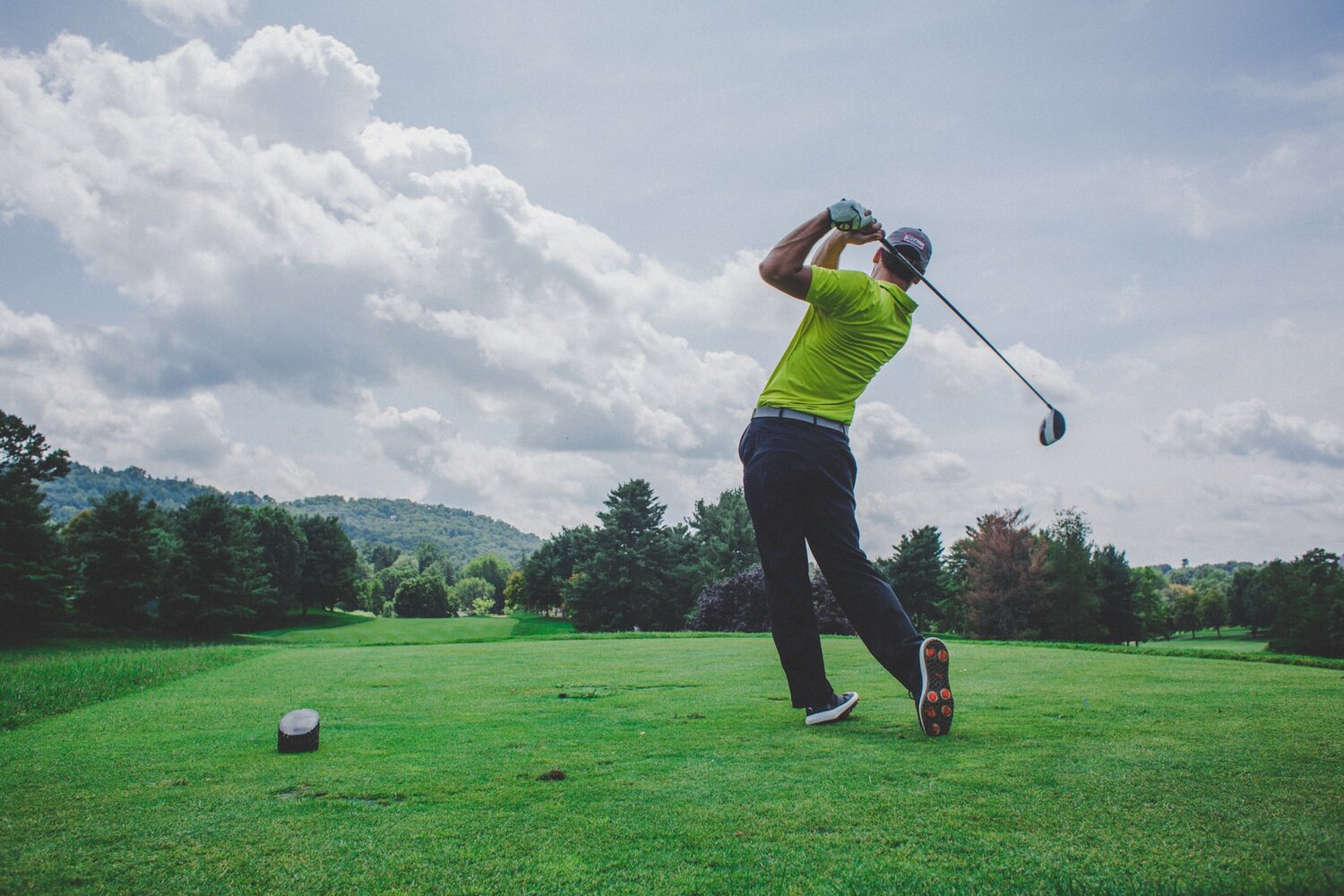The power of the core/breathing approach for golfers is about coordinating the internal muscle action within the mind-body relationship for the golf swing. If you are over 55 years old, it is necessary to exercise every day and use the golf swing and golf as an incentive to develop your training programme so that it increases your enjoyment and ability to play golf. Core/breathing should be the central area of development within your daily practice. In fact, the older you get, the more focus on a daily basis should be on the core/breathing and how you can use it in your daily movement, as it involves engaging the core and breathing over the smallest things to put down or lift. Core/breathing exercises are not done for hours a day but all day to keep muscles in good shape and atrophy at a low level depending on your age.
The Power of Core Breathing For Golf
If a person has chosen golf as their favourite sport, the development of an exercise programme to keep fit to play golf should be done on their own. concentrating on your golf game in two ways First, you create an overall training plan to keep your muscles tight and develop all over your body. Second, you refine the development of your training muscles by targeting a select group of muscles that your sport uses as the main force of physical action. Golf uses the whole body to play the game, so toning muscles is needed, and then there are the muscles you need to train to improve your swing and reduce the chance of injury.
The more you play golf, the more it can affect a person’s physical atrophy level if they don’t use their shoulders as their main force of movement. There is using the wrong muscles to create physical movement that increases atrophy. This programme sees the core and breath as the main forces for moving and playing golf, because when the core gets weak and the breath gets short, strength and stamina leave the person. It does take focus to manage your degree of physical atrophy from about 55, so if you’re between 70 and 80, you can still play a good round of golf, and that’s part of a good golf swing. If you are over 65 and want to change your physical atrophy so that you can play golf at a higher level,
In golf, problems with the lower back are an obstacle to a golf swing, then the movements of the muscles when turning and then the shoulder problems. These are the basic physical weaknesses that hinder a good golf swing and play. How to deal with each problem and work with the interconnections in your golf swing. Learning about your physical parts within your golf swing helps you realise your whole body and using the desire to play golf gives rise to working on your physical atrophy. The rewards of practising within the context of the game of golf provide enjoyable moments and are physical as well as mental. Core/breathing strength is the centrepiece to giving you strength and energy for any physical sport. To influence your lower back problems, core/breathing is the starting point to reshaping your lower back in your golf swing. Shoulder displacement can be influenced by how you breathe into your chest to affect the shape of the shoulder during your swing. Range of motion lies in the direct ability to relax muscles, and the force of exhalation is the first thing you can do to influence relaxation.
These are general ideas and finding and developing techniques within each idea to influence atrophy while at the same time building your golf game differently for each person.
How to apply the Oxygen Advantage to Improve your Golf
Every sport has its own physical impact on the body; it’s just living, but how to handle it so that it doesn’t affect your game and doesn’t hurt your body in the long run requires understanding of your physical body, mind, and spirit. Train and keep the muscles tight for the sport of your choice and focus on the muscles that are most used in your sport and keep them strong. It’s also how you engage and use those muscles to do the golf swing and play that affects how long they will be effective before they become overused and break down and do not heal. Muscle healing is another area of research that needs to be looked at and addressed as you get older. Finding techniques that affect the muscles, spine, and golf swing form is challenging to realise for your physical and mental well-being. Your emotional attitude, which is mental to physical and has a direct effect on muscle tone, while you are playing affects your muscle tone and your waveform during your swing. Using the game of golf and your swing to realise more about yourself from a physical point of view and your attitude to life while in the game and making choices to adapt your game for fun. The more you enjoy what you are doing, the more your muscles relax during your physical activity. Negative poses (fear) will tense the muscles in your golf game, making them weak and prone to injury. Using the game of golf and your swing to realise more about yourself from a physical point of view and your attitude to life while in the game and making choices to adapt your game for fun. The more you enjoy what you are doing, the more your muscles relax during your physical activity. Negative poses (fear) will tense the muscles in your golf game, making them weak and prone to injury. Using the game of golf and your swing to realise more about yourself from a physical point of view and your attitude to life while in the game and making choices to adapt your game for fun. The more you enjoy what you are doing, the more your muscles relax during your physical activity. Negative postures (fear) will tense the muscles in your golf game, making them weak and prone to injury.
The idea of golf as a mental game is very common for people who play, and they think that way because of how hard it is to hit that small ball and their emotions coming up in their swing and play. Changing emotions is harder than changing your swing, but they go together. The reality is that the golf swing is all physical because golf is a physical game with emotional effects, so understanding how they play together creates choices within your game. Adjustments and refinements every time you hit the track are part of the fun of playing. It’s about challenge and testing and realising how things work so that they don’t get boring. Reverse the idea of the golf swing as a physical to mental emotional state. People start thinking about their game or holding on to abstract thoughts that have emotions in them. Those form a muscle reaction, and when they release them, that’s when the body does what you have trained it to do. Being in the zone in your game means your mind feels the muscles are doing what you’re trained to do, but not your mind is thinking about what you’re doing.
The power of core/breathing is an approach for the mind to coordinate with core/breathing to activate a person’s physical waveform, providing an outlet to express their power within the golf swing. Realize that your core/breath is the central force that the rest of the body uses to create action power. If the core is weak, the hands and feet will be weak, and if breath is low, stamina will be low as well. The better the core is connected to the breathing action or coordinated within the movement of the golf swing, the more power can be directed by the mind to all fours.
The great Ben Hogan, in his book on the golf swing, has an illustration that gives a good visual expression of the core and how it affects the muscles that coordinate the swing. The approach to how you energise those muscles is the approach in this program, the power of core/breathing. Developing core/breathing with your exercises to keep you fit to play golf is one part, and the other part is using the core/breathing as you hit the ball on the range, and then there’s the use of core/breathing as you walk the course to relax. The more you use your core and breathing during your game, the more high-level coordination and lower-level atrophy you will have.
If you are 55 or much older, the word atrophy should come into your consciousness because it is about understanding the targets that influence atrophy in your practises that teach the effects of aging. You can’t stop aging, but you can influence it in your physical life by keeping your core and breathing capacity at the highest levels for your age. Using golf as a goal to develop yourself and explore your mind within the game of golf provides contexts for using core/breathing techniques to improve in-game and off-game skills. Core/breathing ideas aren’t just about taking the course, they’re about life itself, because when the core gets weak and your breath is small, you don’t move the body.
The power of core/breathing should be viewed in two different ways, one for men and the other for women, to be most effective due to physical and temperament differences. There is a masculine sense of movement and exercise, and women will use a different set of muscles within the techniques. For each gender group, the ideas should be looked at from their point of view. Knowing that there is a difference can help a person incorporate these ideas in different ways, which helps them be more physical in general and in their golf game. Just like in life, a man will do it one way and a woman will do it another, and that’s exactly how it is, but getting the most out of his skills is the goal. The basic ideas just work, but the sophistication of these ideas needs to be gender-based to create an effective physical experience while playing sports and the golf swing.
Hitting 100 balls on the court should be the warmup for the court. You can think of hitting 100 balls as a core/breathing exercise that boosts your swing by mentally directing a person’s waveform. Making 100 balls hit as an exercise where someone spends 3 hours on the range hitting 100 balls and taking time to work their waveform within their core/breathing development to generate power within their swing. Strengthening the core muscles by creating the golf swing affects the person’s physical atrophy and range of motion. Energy is real and generated in the core area, and physical muscle power is directly connected to the core, but energy and strength must also be seen in the context of the whole torso involved in the act, allowing the person to breathe during the golf swing and exercises. Having a clear understanding of the core area and using the different muscle groups during the breath and during the golf swing is a function of the mind, or mindfulness. The more the mind understands and can feel the different muscle groups, the more you can activate them during your exercises and hit the 100 balls.
This part could be called the daily 100-ball swing exercise, where each swing has a core/breath interaction between the different muscle groups from your golf swing to your hands and feet. If done affectively, fatigue will not be the end effect, but a feeling of muscles getting energy and a good feeling of muscles throughout the body. Using the physical creation of the swing, there are so many types of swings to keep in mind that swings can be bad and that is part of the reason for using the swing as an exercise to get the core/breathing on each swing to activate.
The core/breathing approach for the golf swing begins with the centre of the body and the focus on the navel. The belly button is in the centre of your core, so how that area is used for the different types of bodies plays a role in understanding your abilities. There are all different body shapes, and the goal is the same in the golf swing, but the approach needs to be different to adapt to your skills and age. The approach starts with dividing the swing into two parts at the navel, where there is movement from the navel down and from the navel up. The top part is related to shoulders, and the bottom part is about hips. An example
of how the body moves between the hips and shoulders Stand straight with feet apart (as in addressing) and then bring your mind’s focus to the core area and then the navel. Keeping the focus on the navel and not allowing it to move, rotate your shoulders and head, but do not allow the navel to move from the center. Do this very slowly to feel the muscles on your side and the tension build, then stop at any point to realise the feeling between the hips and shoulders by not letting the navel move. The range of motion will be determined by the body shape. Feeling and realising your range of motion within this turn will help develop your swing and the power you can generate. Practice for your golf swing is to go in the address and return the club, but don’t let your navel turn and feel the muscle effect. The more you pull the bat back and keep your navel centered, the more you build tension, and once you reach your peak, hold and relax the shoulders, feeling the core and muscle relationship with the hands, holding the bat and feeling the bat. You need to feel the club in your hands. That’s the end goal, so you can send it through your swing and feel it when you hit the ball, and that’s fun. When you have strong core muscles and connect your mind to your body through energy, you can feel the club.
Now bring yourself back to speaking and realise how the body rotates at the waist where the navel rotates, the hips rotate, but the shoulder does not. How the body moves down from the navel affects hip movement, foot joint ability, and turning ability. This is about getting a sense of range of motion and understanding how the belly button relationship between hips and feet moves in your swing and how the shoulders power up when the belly button is not moving. Think of this example in the context of the whole torso for the golf swing. Never stop looking at the approach from the idea of the whole torso and body movement, but it is divided at the navel.
The navel influences within use the core/breath influence and improve your swings if they are short or long. Try this with your navel. For a short swing, hold your navel in place when addressing and just move your bat. The force along your leg to hold the navel in place is a very good foundation for your swing. You have to choose whether to bring the hips around with the small swing or not. The more you feel the pressure from the inside of the heel to prevent the hip or navel from spinning, the more tension can build in the muscles in your side and relax the swing. When your mind feels the navel staying in place, the spine can straighten and the shoulders relax.
You can see and feel the differences when the navel moves the hips and the feeling when you hold the navel in one place and feel the freedom of movement of the shoulders. See the three-phase golf swing and how to develop each phase, then include them in your golf swing. How you move your belly button determines whether you have a single or two-part swing, and it affects the strength of the swing as it builds tension in muscle groups from your core and left hip to your left shoulder point.
What is within movement, the core tension, doing and breathing in the context of the trunk while you are addressing, during your swing, and after your swing? It’s all about how you move the belly button and how you set the hip motion for your golf swing. Having core muscle tone gives the mind a sense of connection to movement. The mind does not move muscles unless it feels the muscles.
What was not discussed is how to breathe before, during, and after your swing, because breathing is part of working on your golf swing.
Note: This is an energy view that affects both physically and mentally because it is an approach and it is not simple because it involves experiencing your swing and playing and how to develop and direct your energy flow in it. Here’s a suggestion: don’t do what you read, but play with what is said. It’s about being creative from the inside out and then back again. It’s an interaction where play should be, and that’s the biggest improvement to your game. There are many benefits to being a parent, and being wise can be one of them. Another is developing wisdom within your golf game.
If you’ve lost your strength in your golf game, look at your core strength ratio to shoulder use and your breathing range, because the more you improve your core/breathing, the more you can play in your golf game.



